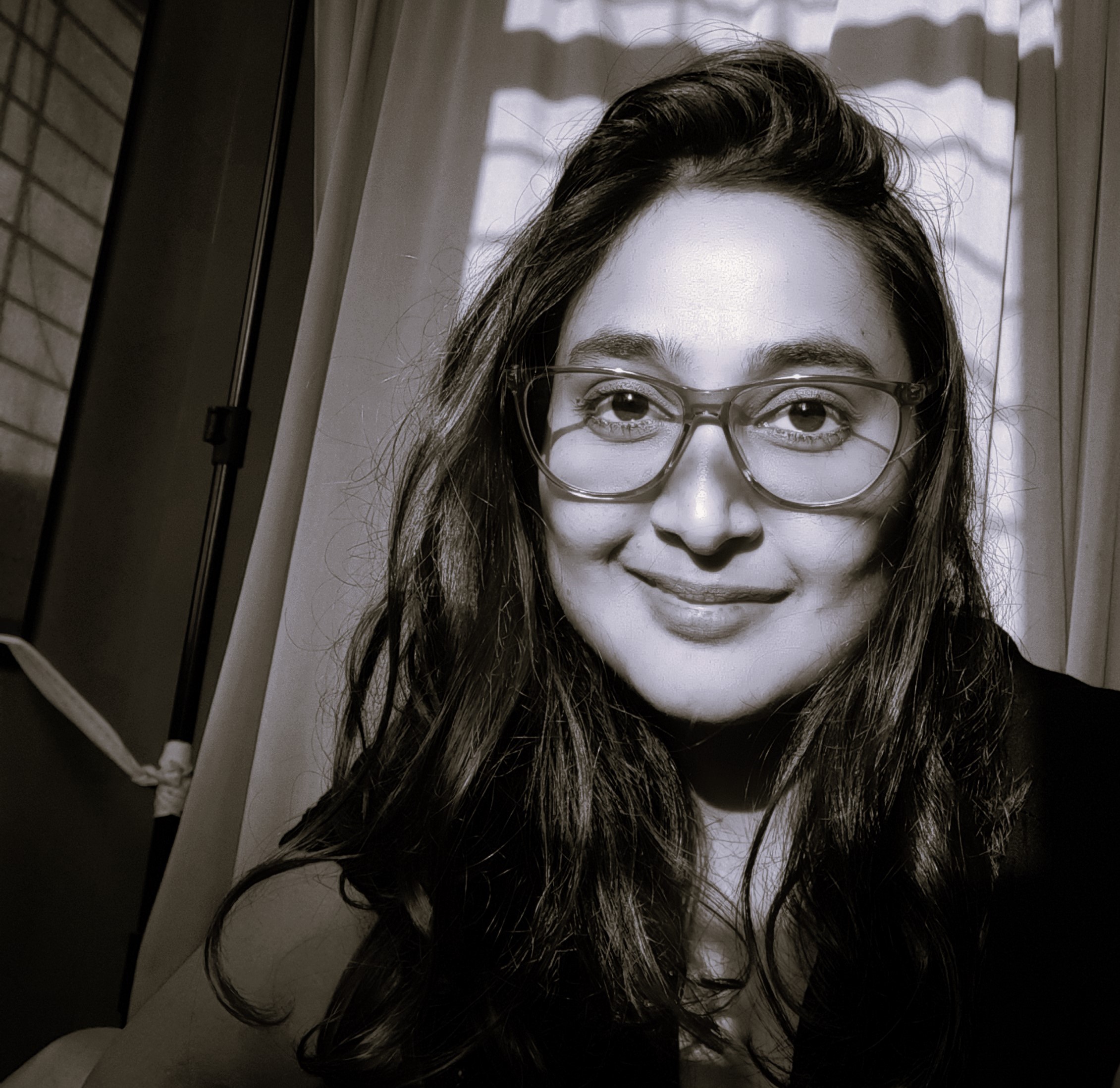
June 2, 2023
The Pigeon Portrait
By Ashwini Gangal
It was one of those stuffy mid-August afternoons in Mumbai when the sky threatened rain but only managed to saturate the atmosphere with humidity, slowly baking the city in its urban oven. It was still and windless, and not a single hair on Vaali’s head moved as she squatted on the floor by the window, gathering the folds of her purple cotton saree between her thighs, looking up at the dark clouds. The purple had faded to a buff brown and bore the dull look of fabric weathered by the spoils of a busy kitchen.
The absence of a breeze made the adjacent building seem closer than usual, somehow. In her neighbour’s balcony Vaali noticed a dismembered hand appearing to adjust the clothespin on the rope, the bangles on the hand making that typical sound – feminine, Indian, middle-class. Not the kind of deliberate, seductive jingle a heroine’s bangles make in Hindi cinema, but the noisy by-product of domestic toil. The pigeon seated on the ledge by the rope almost flew off, but the hand quickly disappeared, giving the bird reason to stay.
Vaali wiped the sweat off her face and got busy with her phone, leaving her sultry surroundings, instantly transported to the world inside the mobile screen. Soon, another pigeon came and sat on a ledge below the balcony, making her companion on top fluff up in that way pigeons fluff up and hoot in that way pigeons hoot. Within seconds, a third one arrived and chose the balcony one floor below. They were perched on three different levels, aware of one another’s presence, busy preening, pecking, and pooping.
Vaali casually looked up and saw the three pigeons, suddenly transfixed by the stunning symmetry of the scene in front of her. The birds sat one below the other, in a way that made them look like three large grey dots along a perfect slant. Hypnotised, Vaali raised a finger and traced an invisible diagonal line through the three birds, remarkable only for the sheer incline they created, because of the way they were positioned. She forgot about her phone as she stared.
Had Vaali been a photographer, she would have quickly picked up her big black camera and captured that visual, making as little noise as possible, unknowingly slowing down her breath as she focused the lens and tempered the light before pressing that portrait into eternity. Vaali the artist would have smudged different shades of oil paint on canvas to immortalise what she saw, dreaming all the while about that framed moment hanging in a Venetian art gallery, outliving her by centuries. The writer she wasn’t would have woven words about these filthy flying rodents, and written about the sick, moist look of their flea-laden feathers, turning the accidental geometric accuracy of that sight into a tragic essay about the futility of such fleeting moments of inspiration. Vaali the mathematician would have seen the error that…. Vaali’s phone beeped, breaking the spell.
She looked down at the screen and when she looked up again, the pigeon in the centre was gone. And just like that, she was looking at two ordinary birds, nothing more, nothing less.
The pressure cooker whistled loudly and Vaali, eyes scanning her mobile for messages once again, walked into the kitchen, forgetting all about the view that caught her fancy just seconds ago. Meanwhile, the clouds finally burst, soaking the city and all it held – buildings, balconies, clothes hung out to dry, ledges. And birds.

Write City Ezine is currently open to submissions. See submission guidelines for further information.
Affiliates/Partners
Testimonials
Contact
Join CWA
Member Directory
My Account
Writers Conference
Presenters
Agents and Publishers
Pitch Sessions
Sponsors
Scholarships
Speaker Registration
Book of the Year
Spirit Award
First Chapter Contest
Resources
Home
Chicago Writers Association
info@chicagowrites.org
Make a Difference!

